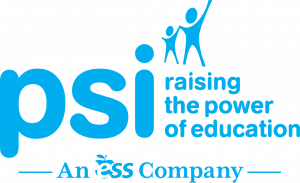Ohio’s increase in school voucher spending this year for the EdChoice Expansion Program sets up the state to rank near the top nationally when it comes to taxpayer use of voucher dollars to attend private schools.
This is not only because of the increase in voucher money for each child but also because of an expansion in eligibility, allowing everyone to receive some form of help to pay for their children’s education outside of their home school district.
“Ohio is one of the states taking the lead in universal school choice,“ says Robert Enlow, president and chief executive of EdChoice, a national pro-school voucher nonprofit. “Other states are seeing a sea change in how we look at education and how we fund it going forward, and Ohio is on the tip of the spear for that.”
It’s that lead, however, that concerns critics of the voucher program, who say vouchers are taking money away from the public school system and only educating a small percentage of the school population.
Ohio is among just 14 states, Washington D.C. and Puerto Rico, that use voucher programs to provide parents and children avenues to attend different schools, though more than 30 states use voucher-adjacent tactics that achieve the same goal.
To get an idea of just how much Ohio is investing in vouchers in comparison to other states – large and small – cleveland.com took the total spending for the most recent school years where data was available on voucher programs in each state and divided it by the total number of students statewide, regardless of whether they were receiving vouchers
Before the expansion, Ohio spent an estimated $241 per capita in the 2020-2021 school year, behind only Maine ($318), Wisconsin ($491) and Vermont ($700).
With the budget increase for EdChoice Expansion to nearly $400 million and increases to other programs of smaller amounts, the Ohio state budget has allotted $964.5 million for the current school year, or about $514 per student.
By next school year, as many as 150,000 Ohio students could be attending schools with taxpayer-provided vouchers, based on current applications.
Vermont and Maine vouchers are primarily for students who live in areas where public schooling options are limited or non-existentand have to travel to another area, paid for using town tuition vouchers.
Wisconsin, like Ohio, has a mix of voucher programs, including income-eligible vouchers like Ohio’s EdChoice Expansion Program. But while Wisconsin also increased the value of its vouchers this year, it does not match Ohio’s expansion.
The number of applications approved by the state for students to be enrolled in Ohio’s voucher program nearly doubled this year, with more applications yet to be processed, preliminary data shows. Ohio has committed $240 million to the EdChoice Expansion program and is at risk of needing more.
School Voucher Programs in the US
Some states, like Ohio, have multiple voucher programs. This is because voucher programs cover a variety of needs.
“School choice started in many ways to help populations that were not getting the service they needed in the traditional sector,” Enlow says.
Many voucher programs aim to assist students with special needs, like Ohio’s Autism Scholarship Program and the Jon Peterson Special Needs Program. Others are for providing education to areas that do not have the right educational resources, like a local high school.
While vouchers only provide a set amount of money to cover private school tuition, there are other voucher-adjacent programs states use to allow students to go to different schools.
This includes education savings accounts, or ESAs, which let parents use an allocation of public money to cover education expenses, including private school tuition and homeschooling costs. This is what states like Florida rely on for school choice.
Another method is a tax credit scholarship program, which allows individuals to receive tax credits for donations to organizations that provide private school scholarships, used in places such as Arizona and Pennsylvania.
When accounting for all of these types of school-choice programs, 32 states have an option for parents or guardians to receive help sending a student to a private school.
According to Enlow, from the national pro-school voucher nonprofit, nearly 37% of students in the country are eligible for a private choice program, a 46% increase from just two years ago. This includes every child in Ohio, one of the largest states in the country.
The EdChoice Scholarship expansion
Ohio’s new EdChoice Scholarship expansion provides students from public schools outside of Cleveland the opportunity to attend participating schools. All students are eligible for vouchers, though the size of the voucher is dependent on income. Cleveland has a separate voucher program called the Cleveland Scholarship Program.
Before the expansion, themaximum voucher amount was $5,500 for students in K-8 and $7,500 for grades9-12, with an average voucher amount being $5,789. With the expansion, the maximum amount is now $6,165 for students in K-8 and $8,407 in 9-12.
The state also expanded eligibilityfor the full amount to 450% of the federal poverty level, or $135,000 for a family of four, from the previous 250% of the federal poverty level. Those with higher incomes will receive prorated benefits.
For instance, families at 451% to 500% of the poverty level are eligible for $5,200 for K-8 and $7,050 for 9-12. The value ratchets down as incomes get higher.The minimum amountfor families earning above 750%, or $225,000 or more for a family of four,is $650 for grades K-8 and $950 for high school.
As a result, the number of families applying for vouchers has also increased.
State education officials by mid-Octoberapproved 43,880 students for the EdChoice Expansion vouchers, which commits the state to $252 million for the scholarship, said Lacey Snoke, a spokeswoman for the state Department of Education and Workforce. At this rate, Ohio may overtake Indiana to have the most children on a singlevoucher program in the country.
Ohio’s rise in voucher use
This continues the exponential growth voucher programs have seen in Ohio, says Tanish Pruitt, a state policy fellow focused on education for the nonprofit advocacy organization Policy Matters Ohio.
In the 2006 fiscal year, the year before EdChoice was established, 6,288 vouchers were being used in the state. By 2014, the number more than quadrupled to 30,062 vouchers. That number is now up to 82,629 for all Ohio school voucher programs in the current school year.
Now for the 2023-24 school year, more than 103,000 vouchers have already been approved, with nearly 50,000 additional applications still being processed, most of which are for the EdChoice Expansion Program. Approval of these applicants would mean 1-in-12 children in Ohio would be going to school on a voucher.
“The cost of Ohio’s voucher programs has increased from $20.5 million in fiscal year 2006 to roughly $600 million in fiscal year 2023, Pruitt says. “The large increase in voucher cost from 2021 ($442 million) to 2022 ($555 million) was the result of both a significant increase in the number of voucher students as well as an increase in the voucher amounts.”
By 2025, Pruitt predicts voucher allocations in the state budget are expected to cross the $1 billion threshold.
Pruitt says that ballooning budgets can become a problem, pointing to Arizona as an example. Arizona’s Empowerment Scholarship Accounts program, an ESA, grew so rapidly that it will cost the state more than it budgeted, requiring reallocating resources.
Ohio’s rapid growth could pose a similar situation, as well as take money away from public schools.
“Vouchers have grown exponentially, while at the same time, we look at funding for our public schools and they grow incrementally,” Pruitt says. “Allocations in state funding could be going to public schools.”




